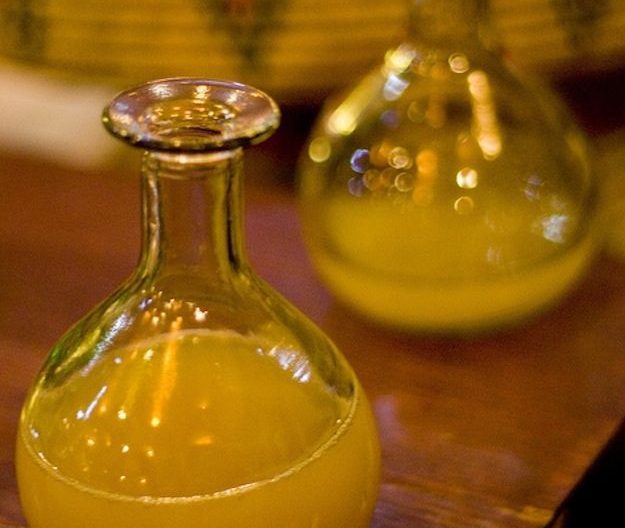
Every society has its own traditional alcoholic beverages that are unique for that specific community, and representing its rich history, identities, and overly proud of it.
Turkey’s Rakı, Japannnese Nihonshu, Ghanaian Nsafufuo, aIrish’s Guinness, Mexicans’ Tequila, Chinaneese Maotai and Koreans’ Soju are some of the beverages that are unique for those countries and the countries are well known for the drinks.
Ethiopia is no exception. Ethiopians, apart from their coffee, which they grow it at home and prepare it with special breathtaking ceremony, they are also known for their homemade alcoholic drink, (honey beverage), Tej that is prepared in a distinctive way and care.
‘Tej’, pronounced as in T’édge, is the generic name for Ethiopian traditional honey wine or mead and it is only available in Ethiopia. This alcoholic beverage is yellow in color and it is sweet in taste. The drink is typically served in glasses, known locally as ‘Brille’ that has a shape of laboratory beaker.
As studies indicate, in Ethiopia, the tradition of brewing Tej from honey goes back to ancient times, Accounts from as early as the 16th century when European exploration of Abyssinia began in earnest, document the presence of this special honey wine, usually consumed only by Ethiopia’s ruling elite.
These historic chronicles, published in the 16th through early 20th centuries, offer many sweet tidbits about Tej: its production and consumption, and its place in Ethiopian society.
Theophilus Waldmeier, an English missionary, wrote in his 1866 memoir: “honey wine (mead) is much appreciated, but all cannot afford to obtain it, which is no loss to them, as it is intoxicating.” Four years later, Henry St. Clair Wilkins stops for a meal with his party in Takoonda and writes: “Here we partook of our own fare in contentment, after an ineffectual attempt to swallow some Tej, the home-brew of the village.” Charles Hindlip, another Englishman, writing in 1906, refers to ‘Tej’, the national drink made of honey, nasty and strong.”
The first Western account of Ethiopian culture was written and published in the 1530s by Father Francisco Alvares, a Portuguese Priest who spent six years in Ethiopia with a mission from his country. He seemed to enjoy ‘Tej’ more than his Scottish counterpart of two centuries later.
“They make wine from many seeds,” Alvares wrote, “and the wine of honey is much the best of all.” He reported that this wine “walked about with great fury, the mistress of the house, concealed behind a curtain, taking her own share.”
Edward Gleichen, a traveler from fin-de-siècle England, also the other visitor who wrote in 1898 about ‘Tej’. As to him, ‘Tej’ is extremely popular with all ranks, but it is only the middle and upper classes who can afford it.
In fact, in earlier times Tej was considered as a favorite drink of well-off families because it was consumed by privileged classes; mainly member of the royal family, noblemen, aristocrats and the like upper class individuals who have the highest status in society.
Following ‘Tej’ was an important beverage among to the highest of Ethiopian society; royal homes have had a ‘Tej’ Azaz’e, or ‘Tej’ Butler, who was in charge of the royal mead.
The beverage is mainly used for great feasts, such as weddings, anniversaries, and similar ceremonial meals. It is a prestige beverage, and more expensive than the local beer.
‘Tej’ is served in ‘Tej bet’ (‘Tej’ House, similar to Coffee House), or special bars set up strictly to sell ‘Tej’ either by ‘Berele’ or by the bottle to take home.
Currently, several restaurants that are serving traditional Ethiopian food also offer ‘Tej’ on the menus. The distilling ritual, with glass beakers reminiscent of high school chemistry lessons, is fun to watch.
‘Tej’, apart from being a beverage that is taken to enjoy, it had also played a role in diplomacy. In his 1868 book that tells about a British mission to Abyssinia, Henry Blanc recounts this moment between the ambassadors and Emperor Theodorus:
As it is stated ‘Tej’ is made in the following way: to one part of honey are added seven parts of water, and well mixed; then some leaves of a plant called “Geshoo” are put into the mixture, to make it ferment; it is put outside in the shade and left for a day or two. A piece of cotton cloth is strained over the mouth of the large earthenware jar, or gumbo, and through this the ‘Tej’ is poured; the servant tapping the cloth with his fingers to make the liquid run freely. It one wants to make it stronger, the first brew is used instead of the water; adding honey and Geshoo leaves in the same way.
In the time of King Theodore, the monarch had ‘Tej’ five years old, which made any one drink in a very short time.
The Ethiopian Herald April 16/2021




